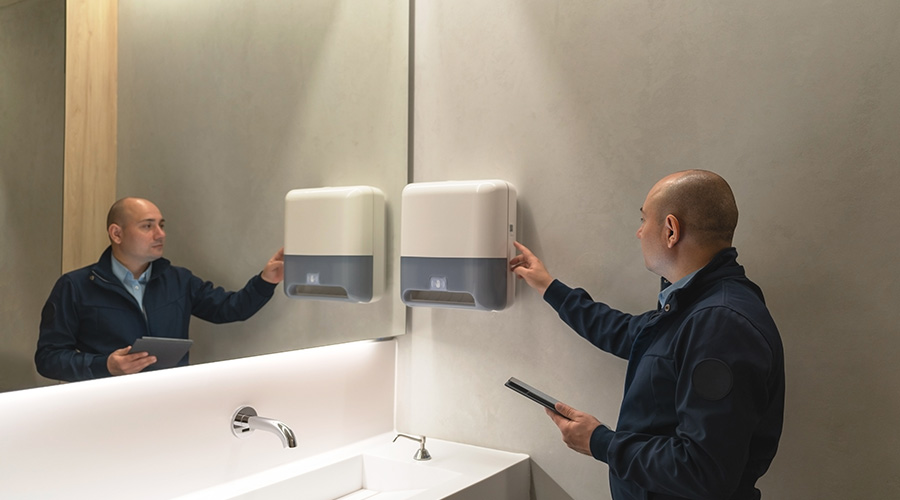Using Tools and Strategies for Drain Cleaning Success
Part three of a four-part article on drain cleaning
Strategies for success
The task for managers and front-line technicians is to combine their knowledge of plumbing system components and condition with their arsenal of tools in order to protect the system and extend its performance life.
Technicians can start by conducting visual inspections of drain lines where they are exposed and accessible and by regularly checking area flow meters. The main water meter can indicate leaks if readings are taken five or ten minutes apart when no water is being used. If a 5-gallon flow occurs in five minutes, this flow equals 525,600 gallons of water wasted each year.
If inline area flow meters are installed in addition to the main meter, technicians can pinpoint the source of the leak more accurately. If a sampler collects 1 quart of condensate leaking from a continuous-process steam trap every minute, that amounts to 131,400 gallons of condensate, water-softening chemicals, and rust-prevention chemicals lost each year, instead of being recycled through the condensate-return system to the makeup water that feeds the boiler.
Technicians can perform internal checks by deploying cameras, internal wall-corrosion and erosion test specimens, and remote sensors that can help them locate underground drains and utilities. The inspection camera consists of a fiber-optic cable with a video head on one end and a monitor on the other. As one technician feeds the video head and cable into the drain line, a second technician views the monitor to check the condition of drain line walls, as well as buildups and blockages.
A technician can feed a video camera down a vertical drain from a roof vent to the basement, observing each lateral connection it passes. The monitor shows the location and nature of leaks and blockages. Based on this inspection, the technician can select the right tools for the repair based on its depth in the line, pipe diameter, and type of leak or blockage. Locating the problem eliminates guesswork and shortens repair time.
If tree roots are blocking a 6-inch drain 20 feet from the nearest cleanout plug, one solution is to use a power rodder with 25 feet of cable and an adjustable, spring-loaded cutter attachment that expands to at least 6 inches to remove the tree root and leave the drain wall clean.
Determining the location of the blockage is a crucial step to solving the problem. A blockage can cause a backup in one location at a certain time and in several locations simultaneously at other times. If only one sink, tub, or toilet backs up, the blockage is located in the line before the first collector. If several drains back up, it is in the collector that serves the backed-up drains.
The technician can place a container large enough to hold the waste water below the cleanout nearest the common collector joins the drains and empty the drains. From the cleanout, the technician can see into the collector with a flashlight or video camera to locate the blockage, identify the type of clog, and select the most appropriate tool to remove it.
If the problem is a tree root near the cleanout, the technician can remove it with a chisel with enough extension to reach it. If the root has caved in the drain wall, the technician will have to dig down to and replace the affected section.
Thomas Westerkamp is a maintenance and engineering management consultant and president of the work management division of Westerkamp Group LLC, www.westerkampgroup.com.
Related Topics:















